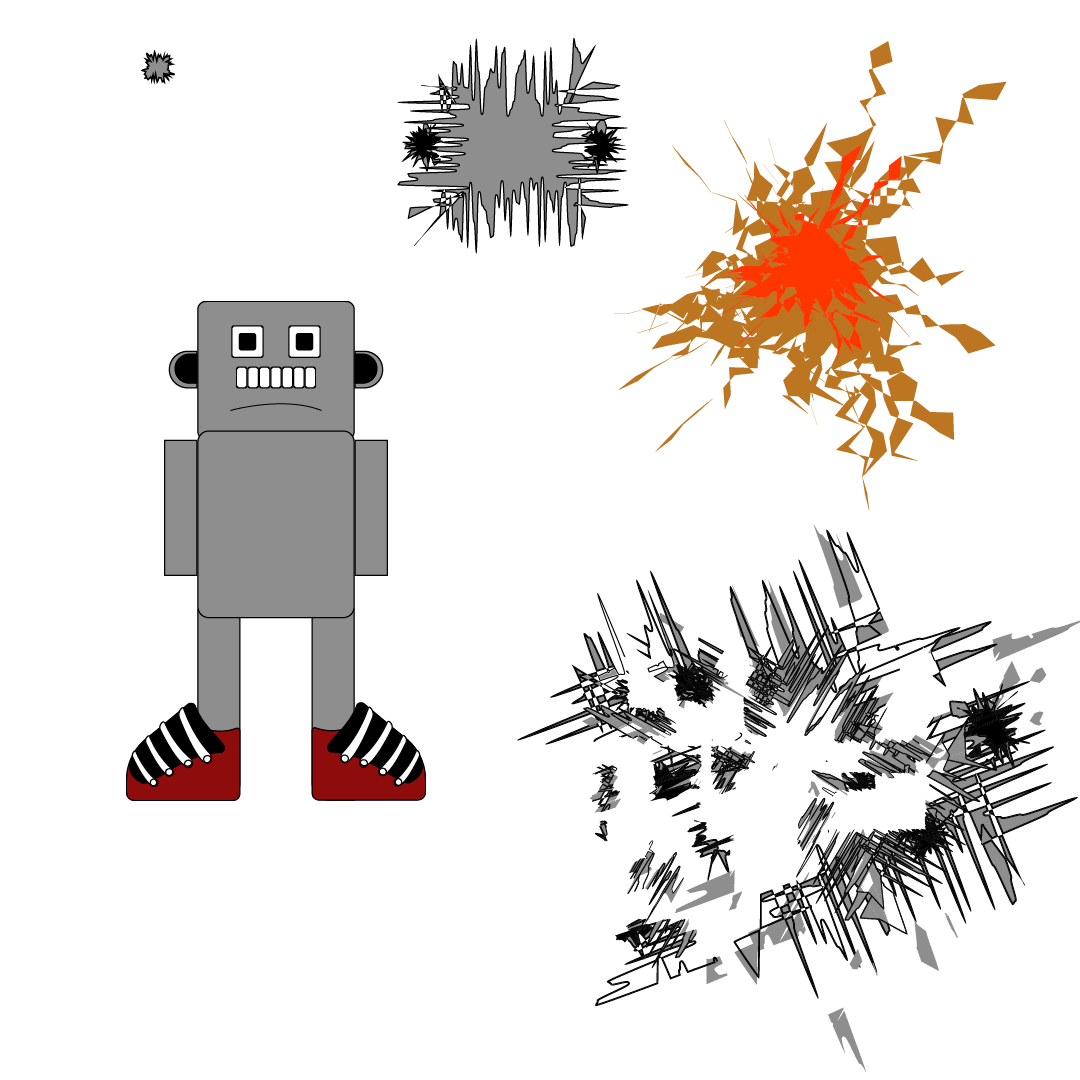Exploding Robot – Motion Study
I illustrated this robot directly in Adobe Illustrator, then built a simple storyboard to plan the motion. The animation was created in After Effects, using the Star Burst effect for the head explosion. I synced two sound effects from Pixabay to enhance the moment.

This 5-second loop was designed as a creative way to practice After Effects—using my own drawings and ideas instead of tutorials. I kept the concept simple to focus on learning timing, expression, and syncing sound with motion.

In the future, I’d like to push the explosion further—make it more chaotic and less uniform. But for now, I’m happy with how the sound design adds energy to the scene.
Process
I began by breaking the robot into separate parts in Illustrator to make animation easier in After Effects. Rigging these elements allowed me to animate the explosion piece-by-piece using puppet pins and keyframes. Synchronizing the animation with sound effects was essential to bring energy and realism.
Challenges
My biggest struggle was nailing the timing — balancing speed and clarity to make the explosion feel impactful but not confusing. It took many iterations of tweaking easing curves and keyframe timing. Syncing sound perfectly was also tricky and required detailed fine-tuning.
What I Learned
This project strengthened my skills in timing, animation layering, and audio-visual synchronization. It taught me patience and the importance of iteration to achieve a satisfying result. I’m motivated to experiment with more chaotic and complex explosions in future projects.